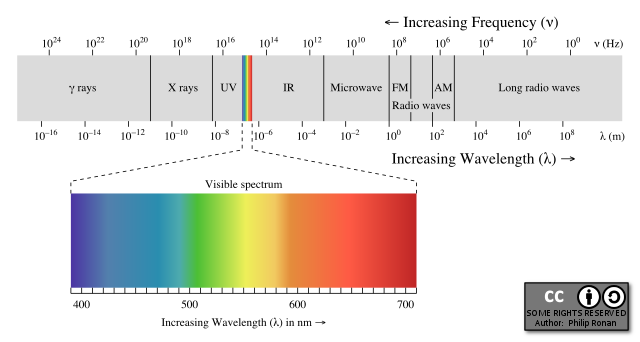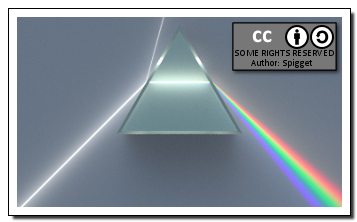Light
Light is a big and every-day part our lives. Its great physical significance comes from its broadness.
Models describing the nature of light
Light behaves strangely so that it cannot be described by strict rules. We say that light has a particle character and a wave character. Different models can be helpful depending on the situation.
If we consider shadows, for example, which means that we deal with the reflexion or refraction of light in a geometrical context, it is useful to describe light as rays.
If we examine the interaction of light and matter, it is useful to describe light as particles.
 Many phenomena can only be explained by considering light as an electromagnetic wave. The electromagnetic spectrum is very multifaceted and is divided into several classes of radiation, depending on the wavelength. With a wavelength of about 1 nanometer (0,000001 mm), X-rays are an example of short-wave radiation, radio-waves have a very long wavelength of 10 meters. Light is the area of the electromagnetic spectrum that we can perceive with our eyes. Light's wavelength ranges from 400 nm to 750 nm (0,0004 mm to 0,0008 mm).
Many phenomena can only be explained by considering light as an electromagnetic wave. The electromagnetic spectrum is very multifaceted and is divided into several classes of radiation, depending on the wavelength. With a wavelength of about 1 nanometer (0,000001 mm), X-rays are an example of short-wave radiation, radio-waves have a very long wavelength of 10 meters. Light is the area of the electromagnetic spectrum that we can perceive with our eyes. Light's wavelength ranges from 400 nm to 750 nm (0,0004 mm to 0,0008 mm).
Colour of light
Light rays themselves have no colour. The impression of colour happens during the processing by the eyes and the brain. The different colours are perceived because the eye reacts differently to the various wavelengths of light. The short-wave area between 400 nm and 500 nm, for example, is perceived as blue, whereas the long-wave area (650 nm to 750 nm) is perceived as red. The other colours of the rainbow are somewhere in between.

If light contains the whole range of wavelengths, we perceive it as white. Only if specific wavelengths are missing or if there is only a small range present in the first place, the eye perceives a colour. Raindrops or prisms split light into the different wavelengths and make visible the different colours.
